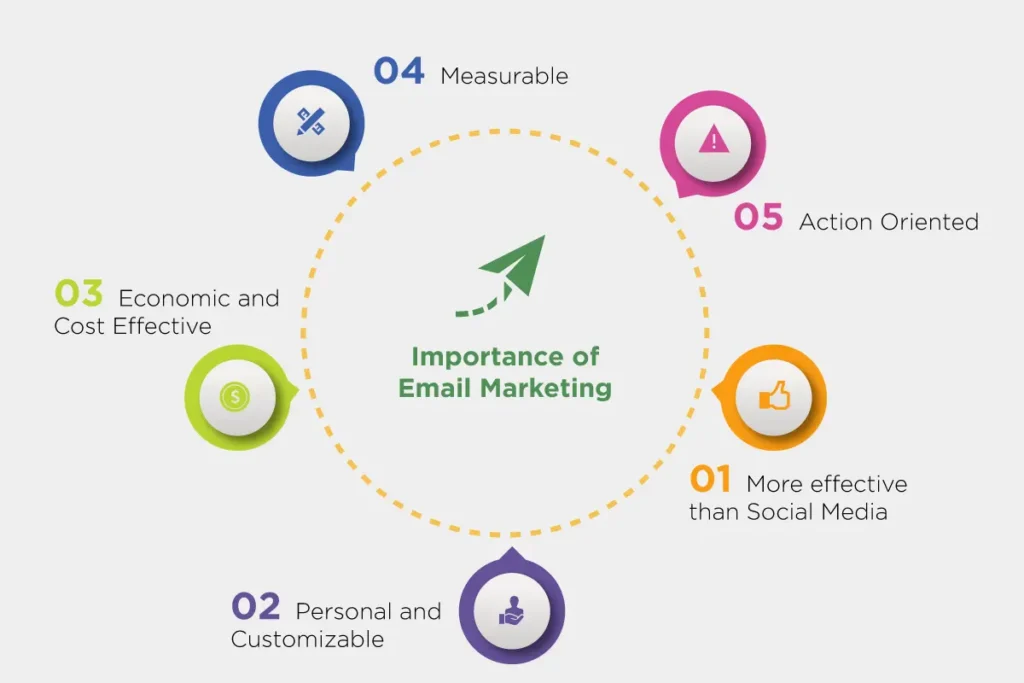Email marketing is a powerful tool, but if your emails keep landing in spam folders, you’re losing out on engagement, conversions, and potential sales. To maximize inbox placement, you need to follow best practices that ensure your emails don’t trigger spam filters.
Why Do Emails Get Marked as Spam?
Before fixing the issue, it’s important to understand why emails end up in spam folders:
- Using spam-trigger words like “Free,” “Buy Now,” and “100% Guarantee.”
- Lack of authentication (SPF, DKIM, and DMARC settings missing).
- Low engagement rates (recipients don’t open or interact with your emails).
- Buying email lists instead of building organic subscribers.
- Not including an unsubscribe link, making emails appear untrustworthy.

Best Practices to Keep Your Emails Out of Spam
1. Use a Recognizable Sender Name and Email
People open emails from brands they trust. Use a professional email address and consistent sender name to build credibility.
2. Authenticate Your Emails (SPF, DKIM & DMARC)
Email authentication is crucial to prevent your emails from being flagged as spam. Set up:
- SPF (Sender Policy Framework): Confirms your email is sent from an authorized server.
- DKIM (DomainKeys Identified Mail): Verifies your email wasn’t tampered with.
- DMARC (Domain-based Message Authentication, Reporting & Conformance): Prevents phishing attempts using your domain.
📌 Need help setting up email authentication? Check out our guide on email security.
3. Avoid Spam-Trigger Words
Spam filters scan email content for suspicious words. Avoid excessive use of:
- “Act now”
- “Make money fast”
- “Exclusive deal”
- “Limited-time offer”
Instead, focus on natural, value-driven language that aligns with your audience’s expectations.
4. Maintain a Healthy Email List
Regularly clean your email list to remove inactive subscribers and invalid addresses. This improves deliverability and engagement rates, reducing the chances of being marked as spam.
💡 Pro Tip: Use segmentation to send targeted emails. Learn more about email segmentation.
5. Encourage Engagement (Replies & Clicks)
Spam filters rank emails based on user engagement. To improve deliverability:
- Ask questions that encourage replies.
- Include clear CTAs (Call-to-Action) to drive clicks.
- Use interactive content like polls, surveys, and GIFs.
6. Personalize Your Emails
A generic email feels like spam. Instead, use:
- First names in the subject line and email body.
- Past purchase data to recommend products.
- User behavior insights to send relevant content.
7. Optimize Email Sending Frequency
Sending too many emails annoys subscribers, while too few make them forget your brand. Find the right balance by:
- Monitoring open rates and click-through rates (CTR).
- Allowing subscribers to set email preferences.
8. Add an Unsubscribe Link (And Make It Easy!)
A missing or hidden unsubscribe link violates email marketing laws (like GDPR and CAN-SPAM). Always include a clear opt-out option to maintain sender reputation.
9. Test Emails Before Sending
Before hitting “Send,” test your emails using tools like:
- Mail-Tester (Checks spam score).
- GlockApps (Monitors deliverability).
- Litmus (Previews across email clients).
Final Thoughts
Avoiding the spam folder is crucial for email marketing success. By following best practices, optimizing email content, and improving engagement, you can ensure your emails reach the inbox every time.
📩 Need expert help with your email marketing strategy? Contact us today!
📞 Call us at 0161 399 3517
📧 Email: Syed_66@hotmail.com

